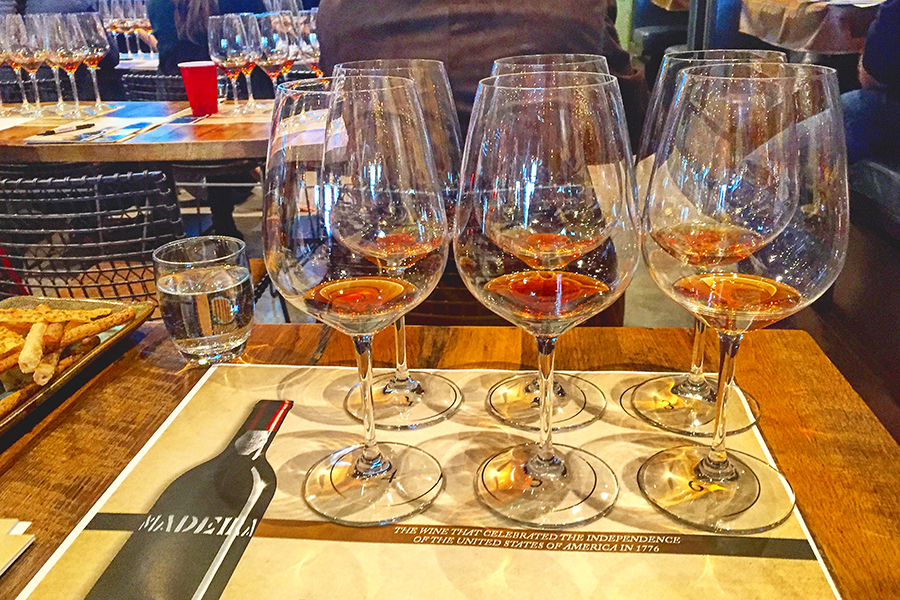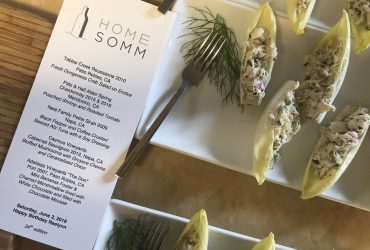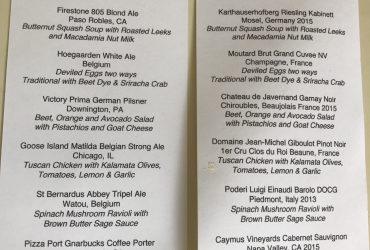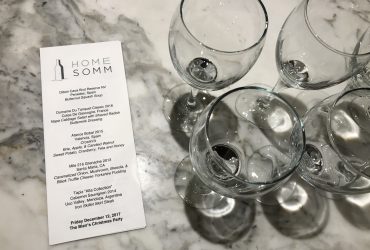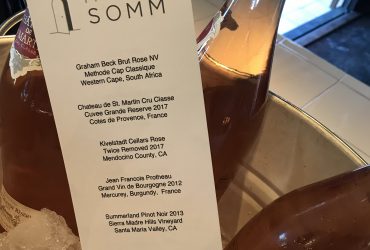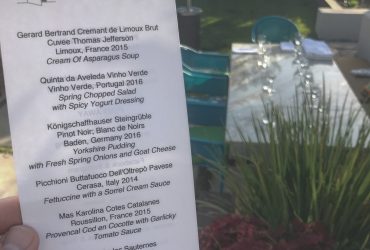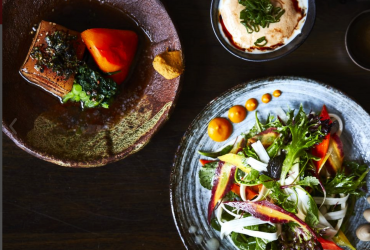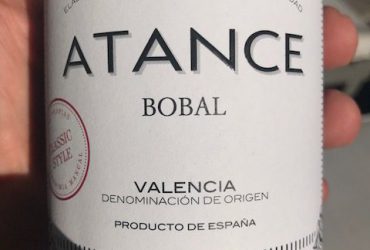A lot of people have heard of, or seen a Madeira wine on the dessert list at many restaurants, but what do you really know about it? Well it’s a harsh volcanic island that is over 900 Km from Africa and 1,000 Km away from Portugal, the country that settled the island when it was found in 1419. It’s 34 miles wide and from South to North is 14 miles long. The climate is subtropical and the soil is very acidic. It was covered in trees, but they burned many down while settling the island after 1420. The mountain in the center part of the island is 6190 feet, and the best growing slopes are between 200-700m. The island itself is very much like Hawaii and maintains a constant temperature and is humid.
The wines made here are an extremely great value for what you get. They are very food friendly, and you can never ever kill the wine. You could leave that bottle on your dashboard in the middle of the summer in Death Valley, and the wine wouldn’t go bad. Ever! That is due to the way it is produced. Which happened by total accident. As you may remember, Portugal was a force to be reckoned with in the 15th and 16th Century, and had one of the biggest navies of the time. They were making trips to the Americas at this time, as well as looking for routes to India. The last stop between Europe and the Americas was the island of Madeira. Not only did wine casks keep the crew happy, but the wooden kegs made great ballast in the hold of the large ships. Well wouldn’t you know it, on one of these voyages some casks got forgotten in the hold of the ship when it returned to Portugal. Well wouldn’t you know it, they wine was actually better than when they left! And this was during a voyage that crossed the Equator more than one time. The hot steamy months long trip had changed the wine into something different and new. It had a pronounced oxidative character, was sweet and had tons of acidity as well as higher alcohol.
There are two basic ways they produce this wine today. Both are how it’s been done on the island for centuries. They had to replicate the conditions on that ship, but on the island. They start like every other winemaker on the planet. Pick the grapes, make a must of the grapes, juice and yeasts, let the wine ferment, the fermentation is arrested by the addition of a grape spirit to fortifie it. The young wine is then put through one of two processes, either Estufagem or Canteiro process. The first way to do this is the Estufagem process in which the wine is put into a stainless steel tank that warms the wine up by circulating hot water through coils that are inside the tank. The wine is heated up to 113-122 degrees F and held like this for at least three months. The other process, Canteiro is used for the best wines. In this method, the wine is put into wooden casks and aged for at least two years in the attics of the winery lodges. In this way the wine is slowly exposed to the heat and humidity of the island in a much slower way. The natural warmth of the sun makes the maturation process much slower, which minimizes the burnt caramel flavors from the sugars, and the bitter flavors that can develop with rapid heating. The best of the best houses may age the wines in cask for 20 years or more, which makes the most rare and most treasured wines: Frasqueiras.
Now enough about all that boring stuff, let’s get into the brass tacks of what you, the consumer should look for when buying either a bottle or a glass of Madeira wine. Now remember, since the wine can not be killed, or go bad, it doesn’t matter if that bottle at the restaurant has been open since the Nixon presidency, because it’s going to be the same as when it was opened!
You will notice a name associated with the bottle you are looking at: Sercial, Verdelho, Terrantez, Boal, and Malvasia (Malmsey). The grapes from driest to sweetest:
Sercial: This is the driest type of grape, and can make a wine like a Fino Sherry. These vineyards grow closer to the ocean. It is great as an aperitif, and has searing acidity and citrus notes when young. It pairs well with soups, consommes, sushi (almost any lighter fish dish), and even fried chicken!
Verdelho: This wine is on the border of dry and sweet, similar to a Spatlese Riesling. It is very flexible when pairing with food. It is slightly fuller in body than Sercial. It pairs well with steak and lamb, and can carry the gaminess. It even goes well with a creme brûlée, fruit or nuts.
Terrantez: This is a very complex wine that can go from dry to sweet, and pairs with tons of foods. It is also quite delicious on its on. Unfortunately, there are not many vines planted to this grape anymore.
Boal: These can be stunning and are medium sweet, and a very rich style of wine that has powerful acidity. It’s highly aromatic, and shows notes of chocolate, roasted nuts, and coffee. It pairs great with ice cream, apple or pecan pie, and caramel. Besides desserts, it also surprisingly pairs well with a cheeseburger.
Malvasia: Malmsey is the British name. This is the sweetest and softest of all the styles, and is the best known. The aromas are of toffee, vanilla and marmalade. It pairs nearly perfectly with cheese courses, especially smoked gouda and stilton.
You may even see bottles by the Rare Wine Co which celebrates the history of Madeira. When this country was founded, the founding fathers enjoyed all the types and styles of Madeira during the 18th and 19th century. There are four of these, and I’ve tried them all, and love each one for it’s uniqueness, and appreciate when I see them on a dessert wine list. They are named for four port cities, and represent the style enjoyed there at the time. In the South, they preferred the drier styles, while in the North, they enjoyed the sweeter styles.
Charleston Sercial: A dry style, but has notes of salted caramel.
Savannah Verdelho: A great salinity on the nose, with orange zest, ginger, milk chocolate and buttery shortbread. It has a great refreshing palate cleansing finish.
Boston Bual: Sweeter than the previous two, with a nose of dried figs, dark sugar, orange, cinnamon and clove. It has enough to pair with nearly any dessert, as well as a dry streak that works with food as well. Actually develops some deeper notes after being open for a few days.
New York Malmsey: Very rich and sweet. Has notes of fruitcake and dry spices.
New Orleans: A cuvee that is rarely released, and extremely limited. It is lightly sweet and lovely acidity.
Baltimore Rainwater: This was the most prestigious wine of the time. It gets it name from the delicate pale color, texture and flavor. It has great finesse and just a touch of sweetness.

